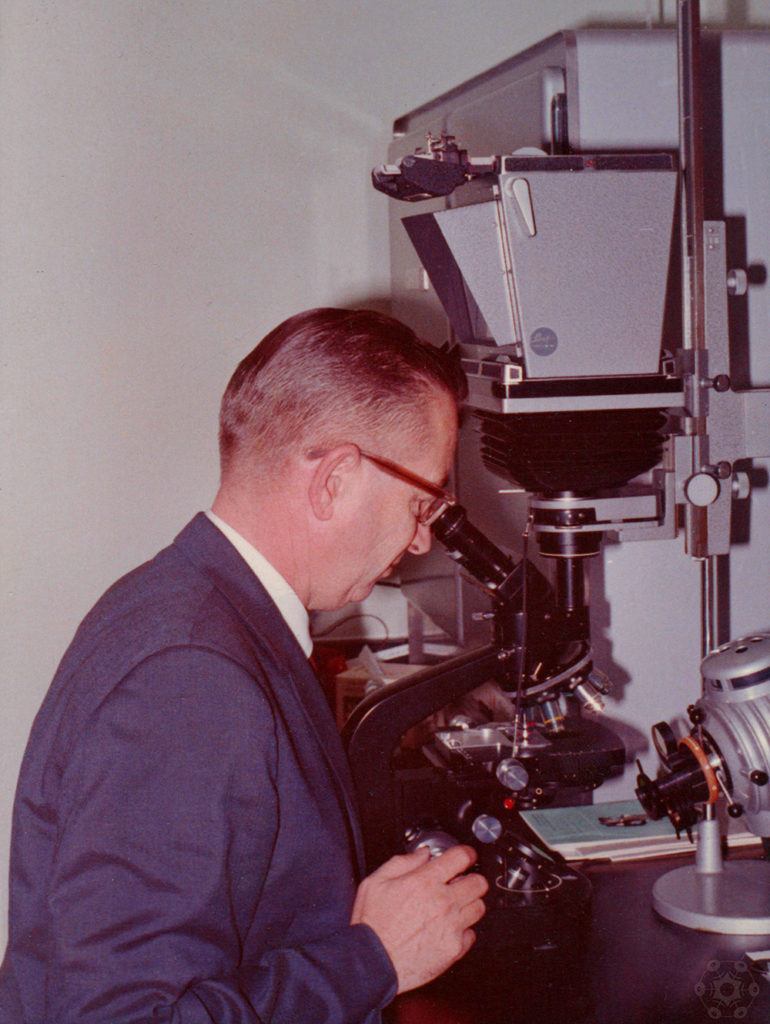History
Martin Microscope Company's History
The history of Martin Microscope Company is inextricably linked to the history of its founder, Robert H. Martin, Sr. (Bob) (1916-2006).
This page gives a brief history of Bob Martin and his Company as well as some insight into who we are and what we do.(not for sale)

Bob Martin was a 1937 graduate of Clemson Agricultural College (Clemson University). He worked at Bausch & Lomb in Atlanta after college where he got started in the field of optics. Called into active military duty during WWII in 1941, Bob used his optical experience to get transferred from the 82nd Airborne Division to Optical Ordinance. He received extensive optics training at Aberdeen Proving Ground before being sent to Cairo, Egypt to run optical manufacturing facilities in Cairo, as well as others in Tel Aviv and Basra, Iraq. While in Egypt, he was in charge of manufacturing optics for gun sights, levels, etc. He also became an accomplished marksman during this period of his life, winning several national and international target-shooting competitions.
Click Here To Read More About The War Years.
Returning home to Easley, South Carolina, after the War in December of 1945, he decided not to return to Bausch & Lomb, but to go into business for himself. Martin Microscope Company was founded on July 4, 1946. “I wasn’t trying to be especially patriotic – it just turned out that I finished assembling my office building that day.” Originally called Martin Scientific Instrument Company (Martin Instrument, for short), the first office was an Army surplus aluminum building. It was located in his home-town of Easley, South Carolina. Initially, the business was comprised of two endeavors: wholesale eyeglass lenses and retail microscope sales. The first microscope manufacturer that Martin Instrument Company represented was American Optical Company headquartered in Buffalo, New York. Additional dealerships from the Swiss Wild Heerbrugg and the German E. Leitz Wetzler followed about 1950. In fact, Martin Instrument Company was the second Wild microscope dealer in the United States, and has outlasted the first Wild dealership, which closed around 1970. Eventually, the wholesale eyeglass business was dropped in favor of selling microscopes.
In 1951, Martin Instrument Company moved to the nearby city of Greenville, South Carolina, to a downtown address at 19 East North Street (which later became 25 East North Street). (Newspaper article from 1958) This office was maintained until 1978. During this time, Martin Instrument Company became well known in the microscopy field in the southeastern United States. The sales territory extended from Virginia to Florida and from Mississippi to Bermuda. Exclusive contracts with state universities, and public and private research facilities, like Oak Ridge National Laboratory in Tennessee and Martin Marietta in Florida, saw the Company grow to become the leading microscope distributor in the Southeast during this period.
Also during this time, optical microscopy advanced considerably with the development of techniques like Phase Contrast, Differential Interference Contrast (Nomarski), and Epi-Fluorescence. Bob Martin worked extensively with the Centers for Disease Control (CDC) in Atlanta, Georgia, in the days preceding and following the development of Epi-Fluorescence. He was hired to try to develop the technique himself, but was not successful. Oscar Richards with American Optical developed the first interference filter. Two of these prototype filters were sent to CDC for evaluation. “I was offered $10,000.00 by another major microscope company to steal one of those filters. I turned them down, of course, and it wasn’t long before they were readily available anyway.” Using interference filter technology, Ploem developed the first dichroic mirror which made Epi-Fluorescence possible. This invention was first licensed to Leitz Wetzler, famous for their Ploem-o-pak fluorescence unit.
In 1978, Martin Instrument Company was forced to move from the downtown Greenville location, and found a home at the Wade Hampton Mall for the next five years. These were turbulent times for Martin Instrument Company. Wild and Leitz merged to become one company, Wild-Leitz. It is often wrongly reported that Leitz bought Wild. In reality, the Swiss company Wild bought Leitz. Control of the microscopy side of the business was given to the Germans, however. Under Leitz control, a new policy was established to govern regional dealerships. The Wild-Leitz representatives came calling with new franchise agreements which limited the dealer to a certain geographical area (Martin Instrument Company was offered the Carolinas only), required a certain sales volume, a minimum number of sales people, and restricted the dealer to selling only Wild-Leitz products. Bob Martin, being unwilling to give up so much control of his business, refused the sign the new dealership agreement, and parted company with Wild-Leitz.
However, with the creation of the Wild-Leitz company, the Wild line of compound microscopes was discontinued, as were Leitz stereomicroscopes. The US headquarters for Wild offered Bob Martin, as the oldest operating Wild dealer in the US, all of their compound microscope inventory at a greatly reduced price. This, plus Martin Instrument’s own large inventory of Leitz and Wild equipment, has yet to be exhausted. So, Martin Instrument Company continues to sell lots of Leitz and Wild products out of stock.
Bob Martin also began looking for other brands to carry in addition to American Optical / Reichert for which he was still a full dealer, though Bob refused to sign any exclusive franchise agreement with any one company. This led to a dealership for Seiler Instrument Company, the US importer of Carl Zeiss, Jena microscopes (known as “aus Jena” in the US). These East German microscopes were high quality instruments manufactured in the original Carl Zeiss production facility in Jena, Germany. After World War II, the Zeiss company was split. Some employees left Jena, which was in the Eastern Bloc, and went to Switzerland where they joined Wild Heerbrugg, and some went to Oberkochen in West Germany where they set up the Carl Zeiss Foundation with the help of the West German government and funded by the Marshall Plan. The aus Jena microscopes of the early 1980’s were not very ergonomically designed, but offered excellent optical performance for a fraction of the price of their West German counterparts. For several years, Martin Instrument Company was the largest dealer for aus Jena microscopes in the country. Used microscopes began to play a significant roll in the business, as well.
In 1983, the five-year lease expired at the Wade Hampton Mall location, and Bob Martin decided to move back home – literally. Having acquired his childhood home in Easley from his mother’s estate, Martin Instrument Company moved back to Easley and into the old white house built by his parents in 1910. (Newspaper article from 1983) At this time, the company name was officially changed to Martin Microscope Company. The house contained offices, display rooms, and shipping and receiving, while inventory was kept at a three-story warehouse one block away on Main Street. This arrangement worked well for ten years. In the 1980’s Martin Microscope Company began selling microscopes from many different manufacturers, sometimes as an official dealer as in the case of Meiji Techno and Prior Scientific, and sometimes working with other dealers in the case of Nikon and Olympus, for example.
Bob Martin’s son and only child Robert H. Martin, Jr. (Bobby) worked in the family business most summers since he was 12, cleaning and organizing, and learning to service classic old microscopes under the expertise of J. Vernon Piephoff, Bob Martin’s childhood friend and later microscope service man. Bobby joined the firm full time in 1988 fresh out of Presbyterian College and began the task of bringing the company into the digital age.
Also in the late 1980’s, American Optical / Reichert and Bausch & Lomb were bought by Cambridge Instruments in Great Britain. Shortly after that, Cambridge and Wild-Leitz merged to form the current Leica conglomerate. In this way, Martin Microscope Company once again became an official dealer for Leica, though not for the full line.
In 1993, the building next door to the old house was purchased to become the present Martin Microscope Company location. Originally a Rhodes Furniture store, this 17,500 square foot facility now houses all of the Martin Microscope inventory, display area, and offices. The building is packed with microscopes! The old Martin house next-door became the Easley Area Museum in 2016.
Bob Martin Sr. passed away at the age of 90 in his 60th year in business on April 3rd, 2006. Martin Microscope Company continues to sell new and used microscopes of all major brands, and also to make specialty products related to microscopy. (Newspaper article from 2009)
We thank you for your interest in our company

